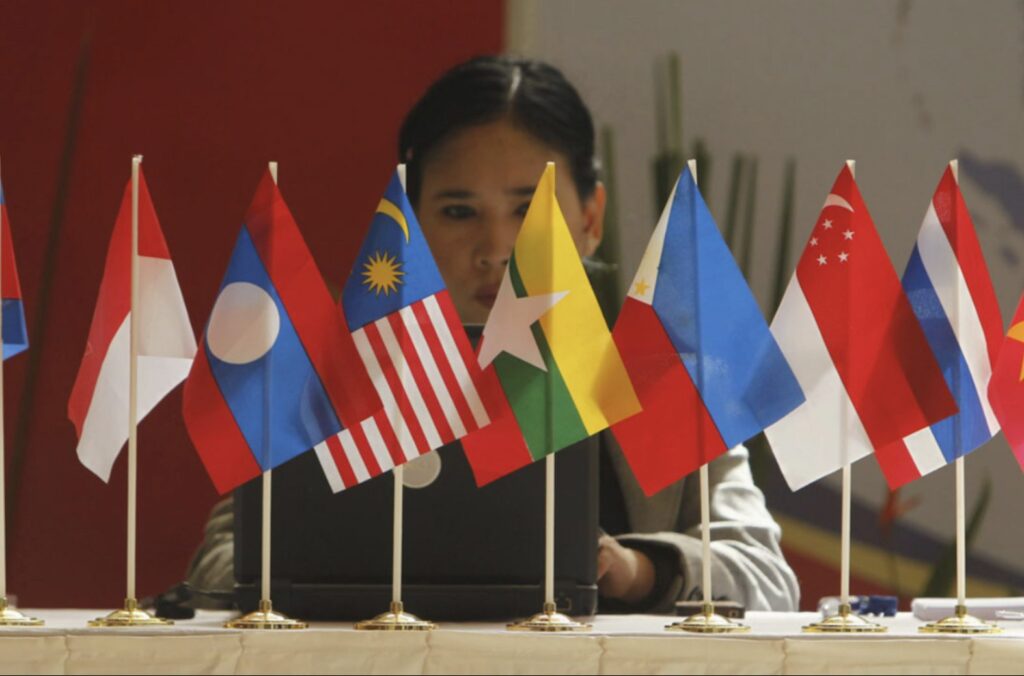
United States President Donald Trump is set to return to Southeast Asia this weekend for the 47th ASEAN Summit in Kuala Lumpur, Malaysia. This marks his first visit to the region since 2017. Following this, he will proceed to Busan, South Korea, for the APEC Leaders’ Meeting and a highly anticipated meeting with Chinese President Xi Jinping.
As the current chair of ASEAN, Malaysia emphasizes the region’s role as a stabilizing force in a rapidly changing world order. It is hosting both the ASEAN and East Asia Summits, which will be attended by Trump and Chinese Premier Li Qiang. Analysts are already speculating about a potential repeat of the “Trump effect” seen during his Gulf Tour earlier this year, where nearly $2 trillion in investment and defense deals were made, reasserting Washington’s influence across Saudi Arabia, the UAE, and Qatar. However, the Indo-Pacific is not the Gulf, and Trump’s influence here is not as dominant.
Understanding the Indo-Pacific Dynamics
In the Middle East, stability often hinges on hard-power projection to manage a binary axis: Iran and Russia on one side, with Washington-aligned Gulf states and Israel on the other. In contrast, the Indo-Pacific operates through a complex web of interdependence that connects great, middle, and small powers. At the core, the US and China anchor the regional system. The United States projects maritime power through alliances with Japan, Australia, the Philippines, Thailand, and South Korea, and remains the region’s largest foreign investor.
Meanwhile, China exerts economic influence and industrial strength through initiatives like the Belt and Road Initiative, BRICS, the Shanghai Cooperation Organisation, and regional supply chains. China has become ASEAN’s largest trading partner. However, rivalry does not solely define the Indo-Pacific’s logic. For all the spectacle of the “Trump effect”—diplomacy conducted through high-stakes deals—the region’s steadiness relies on the influence of smaller and middle powers, long seen as quieter stabilizers.
Flexible Multilateralism: The Regional Approach
The Indo-Pacific’s political culture is designed to absorb, rather than collapse under, great-power competition. Southeast Asia, often described as the place “where the mandalas meet,” has historically been a crossroads of empire and exchange, from the Srivijaya and Majapahit thalassocracies to Cold War balancing acts between Washington and Moscow. Here, Trump’s “America First” stance can coexist with regional interests when competition reinforces equilibrium.
Singapore Prime Minister Lawrence Wong, speaking at the World Economic Forum in Tianjin, urged nations to “update and evolve multilateralism rather than abandon it… lay the building blocks, and eventually others can join.” This “flexible multilateralism” characterizes the region’s instinct to expand networks in trade, digital governance, and maritime cooperation, maintaining interdependence whether led by America, China, or both.
Frameworks such as the RCEP and CPTPP, initiated by Indo-Pacific states, were designed to coexist with newer pacts like the Future of Investment and Trade (FIT) Partnership, a 14-nation initiative launched in 2025 to harmonize digital norms and investment facilitation. Even security arrangements like the ASEAN Defense Ministers’ Meeting-Plus and the Five Power Defense Arrangements (FPDA) preserve open sea lanes and deter dominance by any single major power.
Smaller States: Agents of Stability
In the Indo-Pacific, smaller states are not passive bystanders. Singapore’s Digital Economy Agreements with Australia, the UK, and South Korea inspired the upcoming ASEAN Digital Economy Framework Agreement (DEFA), projected to add $2 trillion to regional GDP by 2030. The Lao-Thailand-Malaysia-Singapore Power Integration Project, now transmitting 200 MW, serves as a pathfinder for an ASEAN Power Grid, crucial for regional energy security and future industries like AI-driven data-center infrastructure.
In this milieu, both “America First” and “China First” can thrive, provided major powers court rather than coerce the smaller states that sustain these overlapping networks. For Trump, this trip offers a chance to move beyond the transactionalism of his Gulf engagements and reaffirm America’s place within the Indo-Pacific’s interconnected order—embedded within, not dominant over, it.
Chokepoints of Stability
While both the US and China command critical chokepoints across the Indo-Pacific, they rely on smaller and middle powers to offset their vulnerabilities. Geography, long said to be destiny, grants these states leverage of their own, with the Strait of Malacca serving as a prime example. Handling a record 94,301 ship transits in 2024, it carries roughly 80% of China’s oil imports, a persistent exposure known as the “Malacca dilemma.”
Regional states have stepped up to play constructive roles in offsetting these constraints faced by major powers. For instance, Singapore partnered with China in the Chongqing Connectivity Initiative, linking western China directly to Southeast Asia for the first time. Singapore’s investment stock in Chongqing more than doubled from $5.7 billion in 2015 to $12.7 billion in 2024, financing multimodal rail-river-sea corridors that cut freight times from Chongqing to Singapore to about a week. In doing so, smaller states like Singapore contribute to regional stability by easing China’s geographic limitations and deepening interdependence.
The United States faces the opposite dilemma: overextension. It still bears primary responsibility for securing Indo-Pacific sea lanes, stretching its naval reach across vast distances. Here, Singapore plays a stabilizing role that reinforces rather than duplicates American power. Its recent acquisition of four P-8A Poseidon maritime patrol aircraft, two additional Type 218SG submarines, and the launch of a new Multi-Role Combat Vessel (MRCV) fleet expands aerial and subsurface coverage of key sea lines, with unmanned systems integrated into information-fusion networks used by the US Navy and FPDA forces.
At the same time, Singapore’s cooperation with Malaysia and Indonesia through the Malacca Strait Patrols enhances collective maritime surveillance and security across one of the world’s busiest chokepoints.
As Singaporean Prime Minister Wong shared with the Financial Times this week:
“While the major powers, of course, have a lot of say and influence in how these things pan out, the rest of the world… do not have to be passive bystanders. We have agency, and we can work amongst ourselves to help preserve the multilateral frameworks that matter… so that in time to come, a new order will emerge, but we do what we can to help this transition and nudge it in the right direction.”
It was a timely reminder that small and middle powers remain the stabilizers of the Indo-Pacific order—convening nodes that embed great powers within flexible frameworks aligned to shared interests. When Trump visits the region on Sunday, the US will not be expected to preside as the rule-setter of the global order but will be received as an indispensable player welcomed with the Indo-Pacific’s “small-state effect.”






